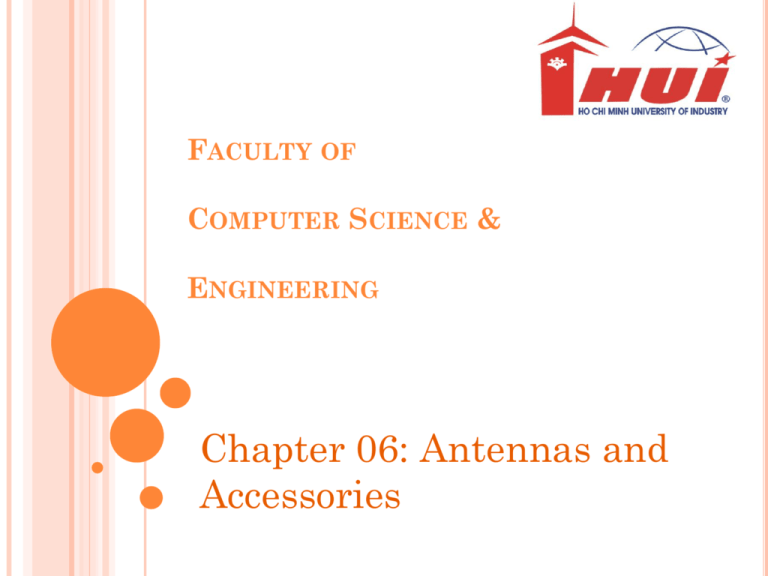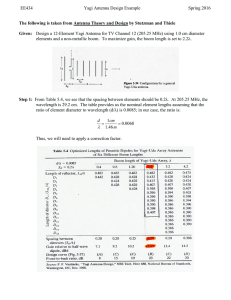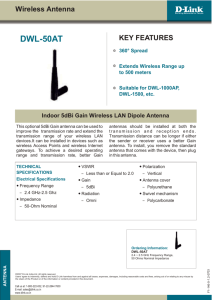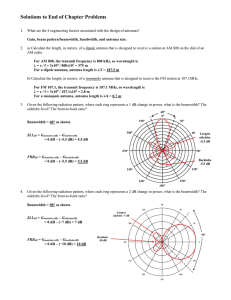Faculty of Computer Science & Engineering
advertisement

FACULTY OF COMPUTER SCIENCE & ENGINEERING Chapter 06: Antennas and Accessories QUESTION 1 1. When purchasing RF connectors, which of the following should be considered when making your decision? Choose all that apply. A. Impedance B. Insertion loss C. Gain D. Maximum frequency allowed QUESTION 2 2. You have been hired as a consultant to install a wireless LAN that will connect only two buildings that are 1.5 miles apart at 11 Mbps. Which one of the following antennas would you use? A. Omni-directional B. High-gain Dipole C. High-gain Yagi D. Parabolic dish QUESTION 3 3. You have been hired as a consultant to install a wireless LAN that will connect two buildings that are 10 miles apart. In this particular area, wind gusts are a problem. Which one of the following antennas would you use? A. High-gain Grid B. High-gain Dipole C. High-gain Yagi D. Parabolic dish QUESTION 4 4. The RF signal amplitude loss that occurs because of the natural broadening of the RF wave front is referred to as which one of the following? A. Fresnel zone loss B. Coverage area loss C. Radiation pattern loss D. Free space path loss QUESTION 5 5. Which of the following are true about PoE devices from different manufacturers? Choose all that apply. A. They always use the same unused pairs for sending current B. They are guaranteed to interoperate with devices from other vendors C. They use the same output voltage D. They may cause damage to devices from other vendors QUESTION 6 6. An antenna’s beamwidth refers to which one of the following? A. The width of the RF signal beam that the antenna transmits B. The width of the antenna main element C. The width of the mounting beam on which the antenna is mounted D. The width of the beam of the RF signal relative to the Earth's surface QUESTION 7 7. Which of the following are names of semidirectional antenna types? Choose all that apply. A. Yagi B. Omni C. Patch D. Panel E. Point-to-point QUESTION 8 8. The coverage area of a Yagi antenna is ONLY in the direction that the antenna is pointing. This statement is: A. Always true B. Always false C. Sometimes true, depending on the antenna manufacturer D. Depends on how the antenna itself is installed QUESTION 9 9. What is the unit of measurement for gain as related to an RF antenna? A. Decibels B. Watts C. dBi D. dBm E. dB QUESTION 10 10. Polarization is defined as which one of the following? A. The direction of the RF antenna in relation to the north and south poles B. The magnetic force behind the antenna element C. The power sources of an antenna that cause the antenna to transmit signal in more than one direction D. The physical orientation of the antenna in a horizontal or vertical position





